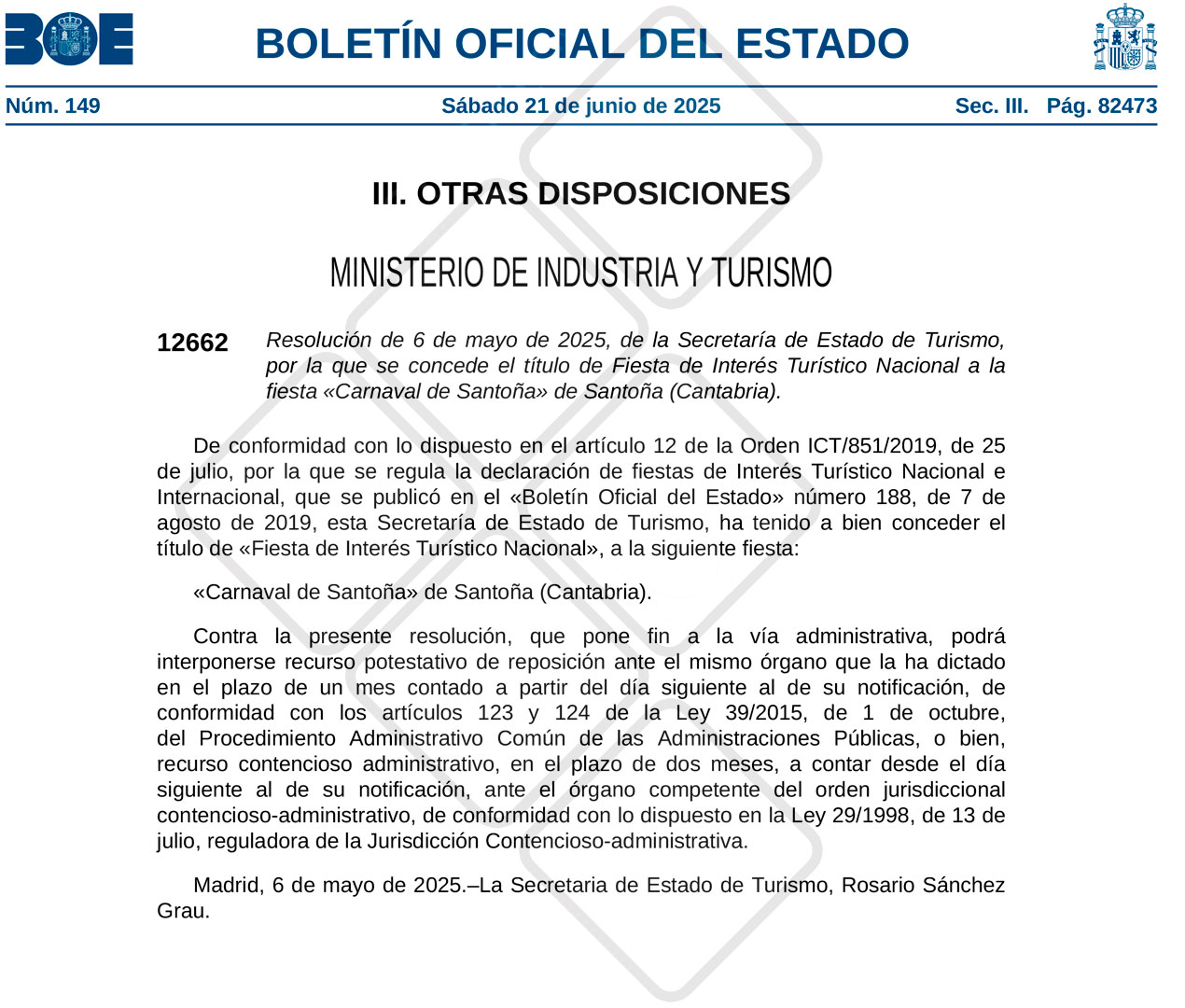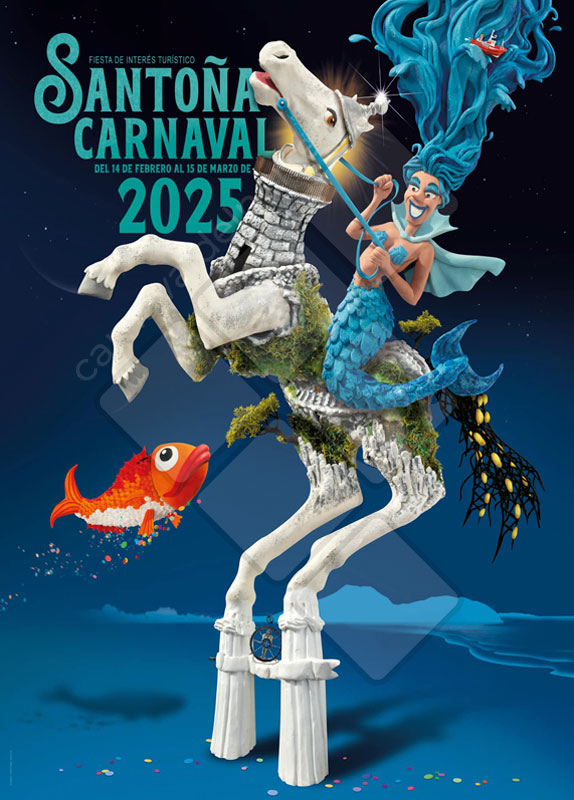The Carnival of Santoña “Fiesta of National Tourist Interest”.
The Carnival of Santoña, one of the most emblematic and unique festivals in northern Spain, has been officially recognized as a Festival of National Tourist Interest.
This important distinction highlights the cultural, historical, and popular richness of a celebration deeply rooted in the seafaring identity of this Cantabrian town.
A well-deserved title, the result of years of effort
 The Carnival of Santoña was declared a "Festival of Tourist Interest" in 1985, at a time when both regional and national tourism interest designations coexisted. Following legislative changes that redefined the official categories, that distinction was reclassified as regional.
The Carnival of Santoña was declared a "Festival of Tourist Interest" in 1985, at a time when both regional and national tourism interest designations coexisted. Following legislative changes that redefined the official categories, that distinction was reclassified as regional.
Today, after a long journey of administrative procedures, documentation gathering, and collective advocacy, that recognition has finally arrived: the Carnival of the North now holds the title it has long deserved.
A carnival with a soul of its own
Far from being a typical carnival, Santoña’s is defined by its popular spirit — a celebration made by and for the people. It combines satire, spectacle, and above all, widespread community participation.
One of its most iconic and unique events is the "Trial at the Bottom of the Sea", a theatrical performance in which Neptune presides over a trial against a red seabream (besugo) in love with a mermaid. This representation, which began in 1982 thanks to José Carlos Juncal and the Peña de la Zarceta, was born as a metaphor defending life and the environment — something we still often fail to appreciate. The original murga song by Los Parrandistas served as the perfect excuse to publicly denounce a troubling situation which, if dire back then, is no better today. The trial is staged in San Antonio Square and culminates with the symbolic "Burning of the Besugo" in the bay.
The celebration also includes murga contests, parades, the Day of Mourning, and the now widely celebrated "Day of the Trasmerano or Villager", with activities for all ages in a festival embraced by the entire town and attracting thousands of visitors each year.
Tradition, satire, and collective spirit
The roots of the carnival go back to the 19th century, with documented references in the minutes of the Liceo Casino from 1864 and municipal ordinances from 1883 regulating its celebration. However, the Spanish Civil War and Franco’s dictatorship brought it to a halt until its revival in 1981, thanks to the drive of local peñas and the Santoña community, as well as support from the town council. Since then, it has continued to grow in creativity, organization, and impact.
This new recognition is, therefore, a victory for the entire town — a symbol of pride for the generations who have kept the tradition alive, and a promise for the future to continue sharing the culture and talent that emerge from the Carnival of the North.
An unmissable date on Spain’s festive calendar
With this national title, the Carnival of Santoña stands among the great carnival celebrations in Spain, alongside cities like Cádiz and Tenerife — yet always with its own unmistakable essence.
The people of Santoña invite everyone to discover — or rediscover — their carnival: a celebration that is sea, music, theatre, satire, history, and above all, a People’s Carnival.




